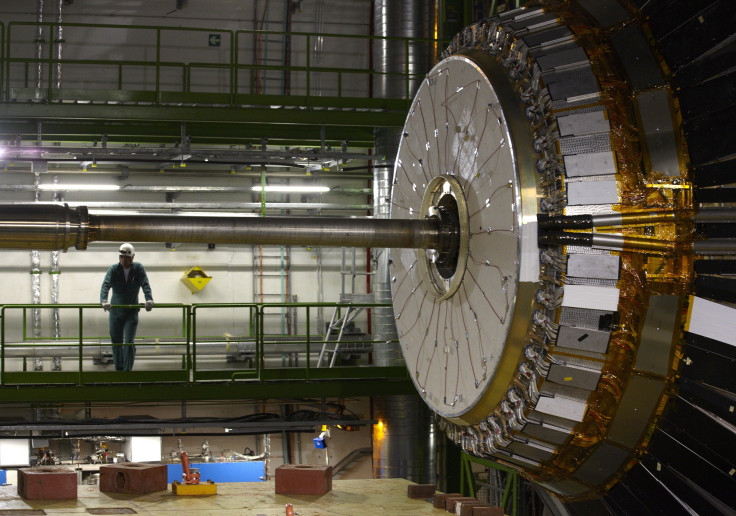Does Dark Matter Originate From Higgs Boson? New Theory To Be Tested At CERN's LHC

Dark matter has long remained one of the greatest unsolved mysteries of the universe. While its presence can be inferred from the gravitational pull it exerts on visible matter, the fact that it does not emit or absorb any radiation makes it next to impossible to detect.
However, when CERN’s Large Hadron Collider (LHC) recommences operation in May this year, scientists will attempt to test a new model of particle physics -- one that attempts to explain the origin of the mysterious dark matter that constitutes over 84 percent of the total matter in the universe.
The new model put forward by a team headed by Christoffer Petersson, a theoretical particle physicist from Chalmers University of Technology in Sweden, suggests that the Higgs boson, discovered by the LHC in 2012, might be responsible for the birth of dark matter particles. According to this model, if supersymmetry is real, the Higgs particle can disintegrate into a photon -- a light carrying particle -- and a dark matter particle.
Supersymmetry predicts that there are more massive “super partners” for every known particle, and is an extension of the Standard Model of particle physics, which governs our understanding of the quantum world. The Higgs boson, which is responsible for imparting mass to all other particles, was the last missing piece that completed the Standard Model. However, even the completed version of this theory fails to incorporate gravity and explain the origin and preponderance of dark matter in the universe.
The model put forward by Petersson and his team would be tested by two independent experimental stations -- Atlas and CMS -- at the LHC, which will restart at much higher energies in March, after a gap of two years.
“It’s a dream for a theorist in particle physics. LHC is the only place where the model can be tested. It’s even nicer that two independent experiments are going to do it,” Petersson said, in a statement.
The theory has found support among scientists at CERN, who, in the words of Tara Shears, a particle physics professor from the University of Liverpool, are looking to “break” the Standard Model.
“Instead of trying to test the truth of this theory, what we really want to do now is break it -- to show where it stops reflecting reality. That's the only way we're going to make progress,” Shears told BBC. “We're looking at something deeper and more exotic.”
If confirmed, Petersson’s model has the potential to completely change our fundamental understanding of the universe and would be an essential step toward formulating the all-encompassing Theory of Everything. “If not, just the fact that they are willing to test my model at CERN is great,” Petersson said.
© Copyright IBTimes 2024. All rights reserved.












